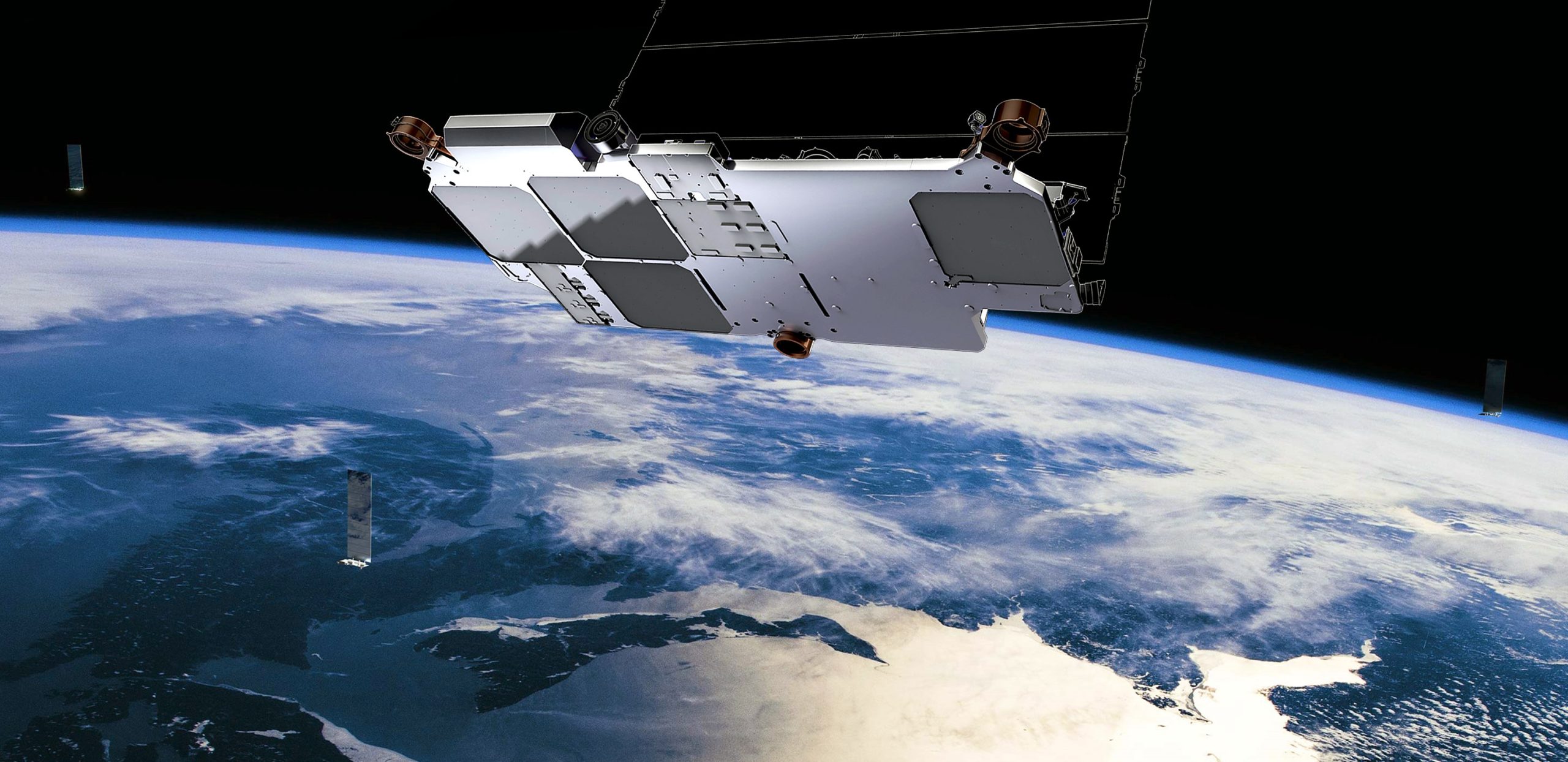
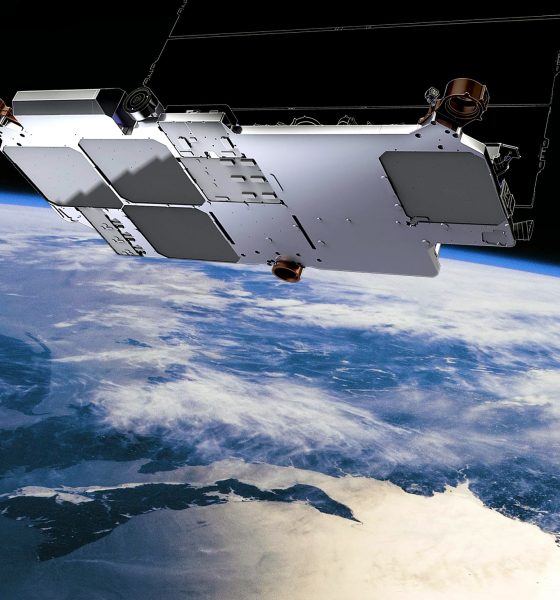
News
SpaceX Starlink job posting signals serious interest in a growing multi-billion dollar market
A new SpaceX Starlink job posting hints that the company is very interested in an established multi-billion dollar market for high-quality satellite internet – a use-case its Starlink constellation should be a perfect fit for.
One of the biggest sources for a recent boom in global demand for satellite broadband services, in-flight connectivity (IFC) is a rapidly growing market well on its way to multi-billion dollar annual revenues within the next few years. Almost anyone with any experience traveling by air is likely familiar with the promises and pitfalls offered by in-flight WiFi, which can often feel extremely convenient and futuristic while still bringing up old memories of DSL internet and flip-phones. Arguably, most – if not all – of the downsides of modern in-flight connectivity and the patchwork addition of onboard servers carrying limited offline entertainment options are caused by technical limitations in the existing IFC ‘pipeline’.
Meanwhile, SpaceX is just a few months into the years-long process of manufacturing and launching a vast constellation of thousands of Starlink internet satellites, designed to blanket every inch of the Earth with high-quality internet service. With internal goals stretching as high as ~40,000 satellites, Starlink could one day offer enough bandwidth to singlehandedly satisfy the internet needs of hundreds of millions – if not billions – of customers worldwide. In the interim, however, how and where SpaceX chooses to commercially deploy its nascent constellation will be critical in its first few years of operations, and in-flight connectivity is one such place where Starlink could theoretically crush existing options and come to dominate the growing market.
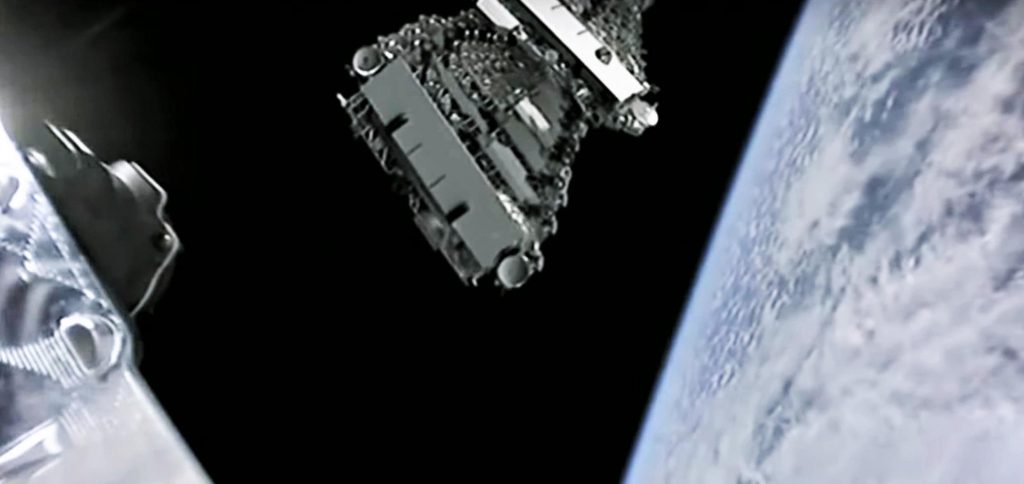
A few days ago, SpaceX published its first job posting exclusively dedicated to “aeronautical terminals”, referring to a type of Starlink user terminals (an antenna and associated hardware) optimized for installation on aircraft fuselages. Thanks to an almost $29 million Starlink contract awarded by the US Air Force Research Laboratory (AFRL) contract in 2018, SpaceX has already built and successfully tested aeronautical terminal prototypes on military aircraft, with even more ambitious tests soon to come. As such, it would be reasonable to assume than a new job posting for such terminals would be focused on SpaceX’s military work.
Instead, SpaceX’s February 21st listing explicitly refers to the new position as an opportunity to “[certify] Starlink aeronautical terminals [for] commercial and business jet aircraft…[and] play a critical role in deploying an industry-changing In-Flight Communications (IFC) service”, unequivocally confirming the company’s interest in entering the broader IFC market.
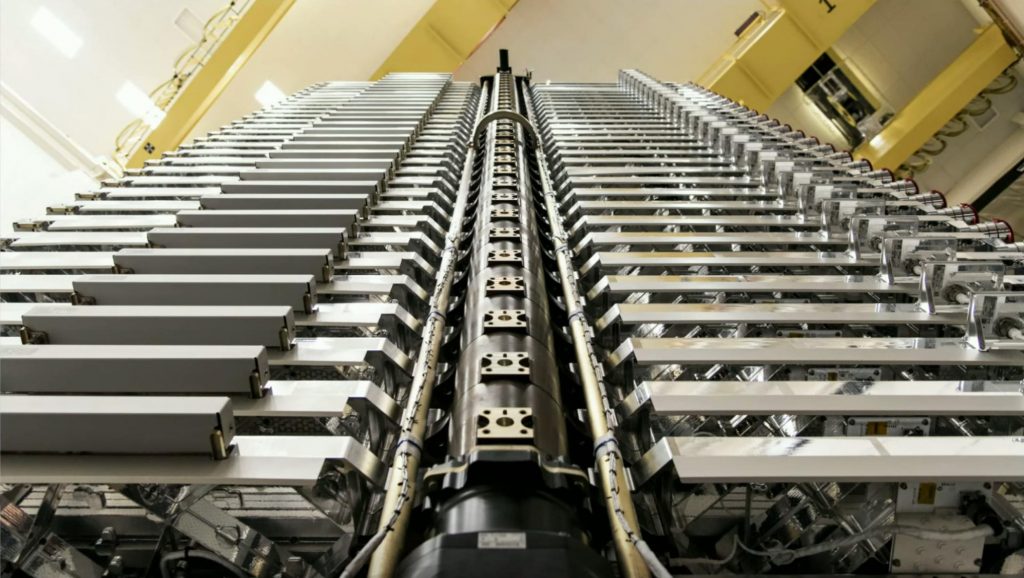
While SpaceX has already launched an incredible 240 Starlink v1.0 satellites in the last two months alone, the company has yet to reveal any specific information about the user terminals customers will use to connect to the orbiting network. Earlier this year, CEO Elon Musk did briefly mention that the terminal would look like a “thin, flat, round UFO on a stick”, while COO and President Gwynne Shotwell stated last year that the terminal would be “beautiful” at Musk’s request. Aside from those comments and a few even older ones, the no-less-critical Starlink component remains a bit of a mystery, although we do know that SpaceX intends to mass produce millions of the devices itself.
Still, SpaceX has made it clear that it’s already testing terminals with some success, noting late last year that it managed to deliver bandwidth of ~610 megabits per second (Mbps) to a US military aircraft through a single flight-optimized terminal. That testing was performed with 60 ‘v0.9’ satellites, meaning that all Starlink satellites launched after May 2019 should be able to offer even more bandwidth thanks to the addition of higher-capacity ‘Ka-band’ antennas.
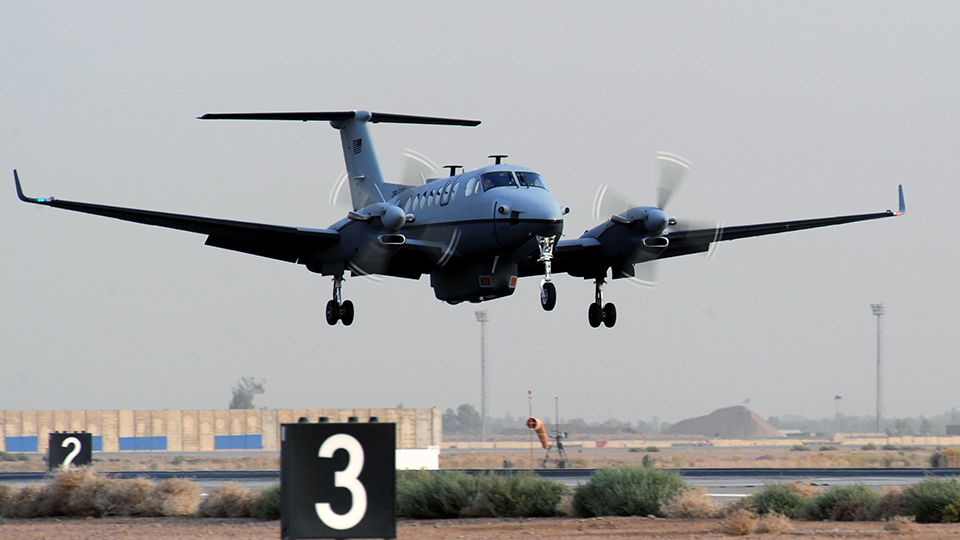
While much is still unknown, the available details paint a fascinating picture of Starlink’s potential in the IFC market. Driven by unprecedentedly ambitious and strict cost targets, SpaceX already builds, owns, and operates its own Falcon rockets, Starlink satellites, and (soon) Starlink terminals – including variants optimized for consumer, aeronautical, and ground station use. In short, SpaceX is building the most vertically-integrated space-based service in the history of commercial space.
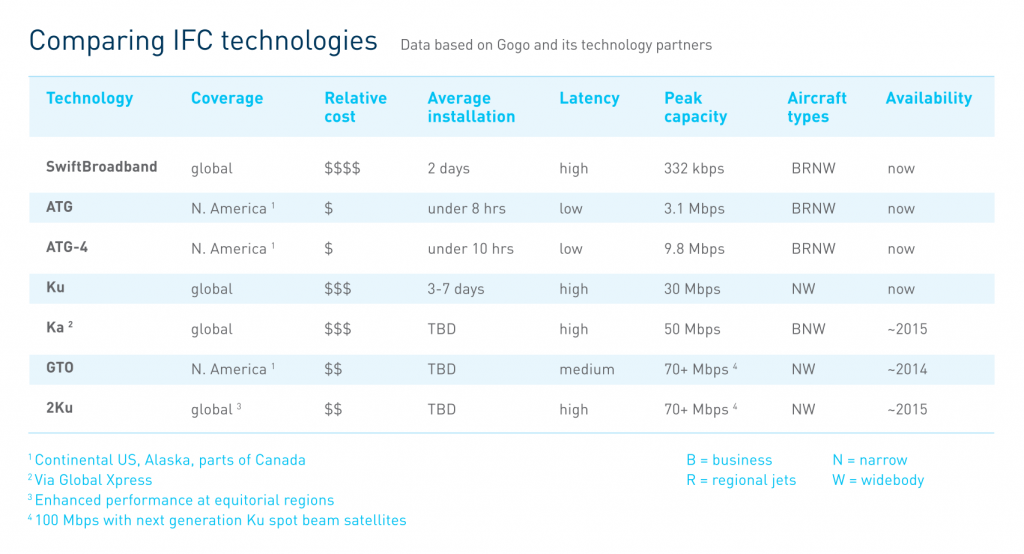
What can effectively be considered a very early pre-alpha of the Starlink satellites, terminals, and network has already demonstrated the ability to deliver bandwidth of more than 600 Mbps to a single in-flight aircraft, at least five times better than the best solutions currently available (~100 Mbps). Thanks to their location in low Earth orbit (LEO), Starlink satellites will also be able to offer latency (the gap between when you click and when something happens) as good as or better than what most people have access to on the ground.
By building and owning every critical aspect of the complex pipeline needed for its Starlink network, SpaceX has full control from start to finish. With Falcon 9 rockets and Starlink satellites, this has meant that SpaceX can reach cost targets that are up to several times cheaper than competing solutions and do so while meeting or beating their technical capabilities. With in-flight connectivity, the rockets, satellites, terminals, and ground infrastructure needed to create a functional network all factor heavily into the prices that can be offered to end-users and as of 2020, there simply isn’t an IFC provider on Earth in a position to compete with the level of vertical integration SpaceX may be able to offer.
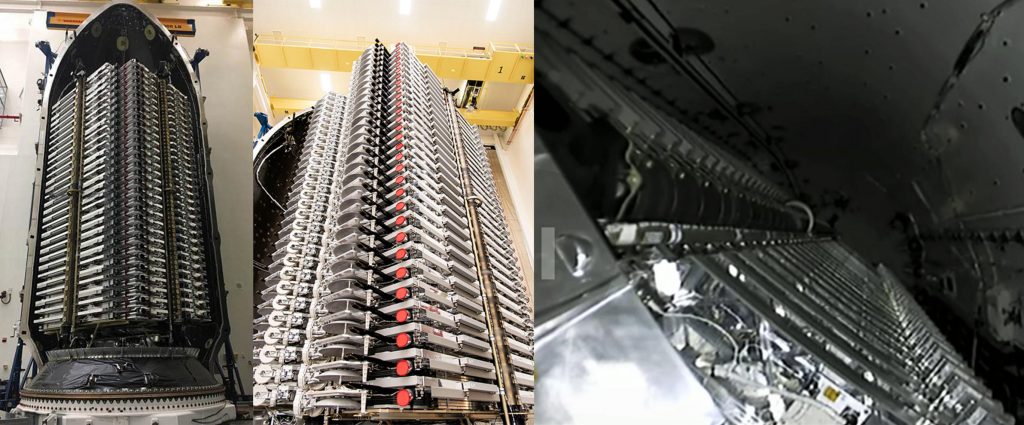
If SpaceX can launch several thousand satellites and figure out how to affordably mass-produce unprecedentedly high-performance terminals (still up for debate), it’s safe to say that Starlink is going to run through existing IFC providers like a brick wall. Aside from potentially beating them on cost, Starlink – offering perhaps 600-1000+ Mbps per plane – could theoretically allow 100-200 airline passengers to simultaneously stream videos, browse the web, and even game in flight as if they were on the ground. Existing providers are physically incapable of competing with something like that without extensive infrastructure upgrades.
According to Satellite Markets & Research, the annual revenue of passenger aircraft IFC broke $1 billion for the first time in 2018 and the overall market is expected to be worth at least $36 billion (~$3.5B/year) from 2019 to 2029. Major provider Inmarsat estimates that the IFC market could be worth up to $15 billion annually by 2035. With a bit of luck, SpaceX could easily secure a major portion of that pot within just a handful of years.
Check out Teslarati’s Marketplace! We offer Tesla accessories, including for the Tesla Cybertruck and Tesla Model 3.

News
Tesla removes Safety Monitors, begins fully autonomous Robotaxi testing
This development, in terms of the Robotaxi program, is massive. Tesla has been working incredibly hard to expand its fleet of Robotaxi vehicles to accommodate the considerable demand it has experienced for the platform.

Tesla has started Robotaxi testing in Austin, Texas, without any vehicle occupants, the company’s CEO Elon Musk confirmed on Sunday. Two Tesla Model Y Robotaxi units were spotted in Austin traveling on public roads with nobody in the car.
The testing phase begins just a week after Musk confirmed that Tesla would be removing Safety Monitors from its vehicles “within the next three weeks.” Tesla has been working to initiate driverless rides by the end of the year since the Robotaxi fleet was launched back in June.
Two units were spotted, with the first being seen from the side and clearly showing no human beings inside the cabin of the Model Y Robotaxi:
A Tesla without a driver was spotted traveling on public roads! pic.twitter.com/ZLbduf4cKa
— TESLARATI (@Teslarati) December 14, 2025
Another unit, which is the same color but was confirmed as a different vehicle, was spotted just a few moments later:
NEWS: A second Tesla Model Y Robotaxi running FSD Unsupervised has just been spotted driving itself on public roads in Austin, Texas, with no one in the front seats.
This is a different car from the one spotted earlier. They have different license plates.
h/t @Mandablorian https://t.co/5URYsUGyD0 pic.twitter.com/CIUi4mXi33
— Sawyer Merritt (@SawyerMerritt) December 14, 2025
The two units are traveling in the general vicinity of the South Congress and Dawson neighborhoods of downtown Austin. These are located on the southside of the city.
This development, in terms of the Robotaxi program, is massive. Tesla has been working incredibly hard to expand its fleet of Robotaxi vehicles to accommodate the considerable demand it has experienced for the platform.
However, the main focus of the Robotaxi program since its launch in the Summer was to remove Safety Monitors and initiate completely driverless rides. This effort is close to becoming a reality, and the efforts of the company are coming to fruition.
Testing is underway with no occupants in the car
— Elon Musk (@elonmusk) December 14, 2025
It is a drastic step in the company’s trek for self-driving technology, as it plans to expand it to passenger vehicles in the coming years. Tesla owners have plenty of experience with the Full Self-Driving suite, which is not fully autonomous, but is consistently ranked among the best-performing platforms in the world.
News
Tesla refines Full Self-Driving, latest update impresses where it last came up short
We were able to go out and test it pretty extensively on Saturday, and the changes Tesla made from the previous version were incredibly impressive, especially considering it seemed to excel where it last came up short.

Tesla released Full Self-Driving v14.2.1.25 on Friday night to Early Access Program (EAP) members. It came as a surprise, as it was paired with the release of the Holiday Update.
We were able to go out and test it pretty extensively on Saturday, and the changes Tesla made from the previous version were incredibly impressive, especially considering it seemed to excel where it last came up short.
Tesla supplements Holiday Update by sneaking in new Full Self-Driving version
With Tesla Full Self-Driving v14.2.1, there were some serious regressions. Speed Profiles were overtinkered with, causing some modes to behave in a strange manner. Hurry Mode was the most evident, as it refused to go more than 10 MPH over the speed limit on freeways.
It would routinely hold up traffic at this speed, and flipping it into Mad Max mode was sort of over the top. Hurry is what I use most frequently, and it had become somewhat unusable with v14.2.1.
It seemed as if Speed Profiles should be more associated with both passing and lane-changing frequency. Capping speeds does not help as it can impede the flow of traffic. When FSD travels at the speed of other traffic, it is much more effective and less disruptive.
With v14.2.1.25, there were three noticeable changes that improved its performance significantly: Speed Profile refinements, lane change confidence, and Speed Limit recognition.
🚨 Many of you asked us to test highway driving with Tesla Full Self-Driving v14.2.1.25. Here’s what we noticed:
✅ Speed Profiles are significantly improved. Hurry Mode is no longer capped at 10 MPH over the speed limit, and now travels with the flow of traffic. This is much… pic.twitter.com/48ZCGbW0JO
— TESLARATI (@Teslarati) December 13, 2025
Speed Profile Refinement
Speed Profiles have been significantly improved. Hurry Mode is no longer capped at 10 MPH over the speed limit and now travels with the flow of traffic. This is much more comfortable during highway operation, and I was not required to intervene at any point.
With v14.2.1, I was sometimes assisting it with lane changes, and felt it was in the wrong place at the wrong time more frequently than ever before.
However, this was one of the best-performing FSD versions in recent memory, and I really did not have any complaints on the highway. Speed, maneuvering, lane switching, routing, and aggressiveness were all perfect.
Lane Changes
v14.2.1 had a tendency to be a little more timid when changing lanes, which was sort of frustrating at times. When the car decides to change lanes and turn on its signal, it needs to pull the trigger and change lanes.
It also changed lanes at extremely unnecessary times, which was a real frustration.
There were no issues today on v14.2.1.25; lane changes were super confident, executed at the correct time, and in the correct fashion. It made good decisions on when to get into the right lane when proceeding toward its exit.
It was one of the first times in a while that I did not feel as if I needed to nudge it to change lanes. I was very impressed.
Speed Limit Recognition
So, this is a complex issue. With v14.2.1, there were many times when it would see a Speed Limit sign that was not meant for the car (one catered for tractor trailers, for example) or even a route sign, and it would incorrectly adjust the speed. It did this on the highway several times, mistaking a Route 30 sign for a 30 MPH sign, then beginning to decelerate from 55 MPH to 30 MPH on the highway.
This required an intervention. I also had an issue leaving a drive-thru Christmas lights display, where the owners of the private property had a 15 MPH sign posted nearly every 200 yards for about a mile and a half.
The car identified it as a 55 MPH sign and sped up significantly. This caused an intervention, and I had to drive manually.
It seems like FSD v14.2.1.25 is now less reliant on the signage (maybe because it was incorrectly labeling it) and more reliant on map data or the behavior of nearby traffic.
A good example was on the highway today: despite the car reading that Route 30 sign and the Speed Limit sign on the center screen reading 30 MPH, the car did not decelerate. It continued at the same speed, but I’m not sure if that’s because of traffic or map data:
🚨 We listened to and read a lot of you who had a complaint of Tesla Full Self-Driving v14.2.1 incorrectly reading Speed Limit signs
This appears to be resolved in v14.2.1.25.
Here’s a breakdown: pic.twitter.com/TEP03xrMbt
— TESLARATI (@Teslarati) December 13, 2025
A Lone Complaint
Tesla has said future updates will include parking improvements, and I’m really anxious for them, because parking is not great. I’ve had some real issues with it over the past couple of months.
Today was no different:
🚨 My lone complaint with my drive on Tesla FSD v14.2.1.25 was this strange parking instance.
FSD swung out wide to the left to pull into this spot and this is where it seemed to be stumped. I gave it about 10 seconds after the car just stopped moving for it to make some… https://t.co/ZEkhTHOihG pic.twitter.com/TRemXu5DLf
— TESLARATI (@Teslarati) December 13, 2025
Full Self-Driving v14.2.1.25 is really a massive improvement over past versions, and it seems apparent that Tesla took its time with fixing the bugs, especially with highway operation on v14.2.1.
News
Tesla hints at Starlink integration with recent patent
“By employing polymer blends, some examples enable RF transmission from all the modules to satellites and other communication devices both inside and outside the vehicle.”

Tesla hinted at a potential Starlink internet terminal integration within its vehicles in a recent patent, which describes a vehicle roof assembly with integrated radio frequency (RF) transparency.
The patent, which is Pub. No U.S. 2025/0368267 describes a new vehicle roof that is made of RF-transparent polymer materials, allowing and “facilitating clear communication with external devices and satellites.”
Tesla believes that a new vehicle roof design, comprised of different materials than the standard metallic or glass elements used in cars today, would allow the company to integrate modern vehicular technologies, “particularly those requiring radio frequency transmission and reception.
Tesla has recently filed a US patent application on integrating RF transparent materials into the roof structure.
“facilitating clear communication with external devices and satellites”
Tesla fleet is getting @Starlink connectivity integration soon. LFG @Tesla @elonmusk… pic.twitter.com/bLa8YtPLd1
— Chansoo Byeon (@Chansoo) December 9, 2025
Instead of glass or metallic materials, Tesla says vehicles may benefit from high-strength polymer blends, such as Polycarbonate, Acrylonitrile Butadiene Styrene, or Acrylonitrile Styrene Acrylate.
These materials still provide ideal strength metrics for crashworthiness, stiffness for noise, vibration, and harshness control, and are compliant with head impact regulations.
They would also enable better performance with modern technologies, like internet terminals, which need an uninterrupted signal to satellites for maximum reception. Tesla writes in the patent:
“By employing polymer blends, some examples enable RF transmission from all the modules to satellites and other communication devices both inside and outside the vehicle.”

One of the challenges Tesla seems to be aware of with this type of roof design is the fact that it will still have to enable safety and keep that at the forefront of the design. As you can see in the illustration above, Tesla plans to use four layers to increase safety and rigidity, while also combating noise and vibration.
It notes in the patent that disclosed examples still meet the safety requirements outlined in the Federal Motor Vehicle Safety Standards (FMVSS).
Starlink integrated directly into Tesla vehicles would be a considerable advantage for owners. It would come with a handful of distinct advantages.
Initially, the inclusion of Starlink would completely eliminate cellular dead zones, something that is an issue, especially in rural areas. Starlink would provide connectivity in these remote regions and would ensure uninterrupted service during road trips and off-grid adventures.
It could also be a critical addition for Robotaxi, as it is crucial to have solid and reliable connectivity for remote monitoring and fleet management.
Starlink’s growing constellation, thanks to SpaceX’s routine and frequent launch schedule, will provide secure, stable, and reliable internet connectivity for Tesla vehicles.
Although many owners have already mounted Starlink Mini dishes under their glass roofs for a similar experience, it may be integrated directly into Teslas in the coming years, either as an upgrade or a standard feature.








